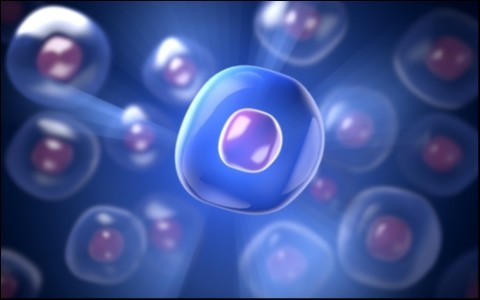TMJ Stem Cells Used to Repair Damaged Cartilage
 A promising new study by the Columbia College of Dental Medicine at Columbia University is offering hope for the tens of millions of people around the world suffering from Temporomandibular Joint (TMJ) Disorder. In the study, researchers were successfully able to regenerate the cartilage within the temporomandibular joint using stem cells located within the jaw bone. Dr. Gary Lederman of Bellmore, NY is a neuromuscular dentist who specializes in the treatment of TMJ disorder. We spoke to him about the implications of this study, and what the findings could mean for patients living with TMJ disorder.
A promising new study by the Columbia College of Dental Medicine at Columbia University is offering hope for the tens of millions of people around the world suffering from Temporomandibular Joint (TMJ) Disorder. In the study, researchers were successfully able to regenerate the cartilage within the temporomandibular joint using stem cells located within the jaw bone. Dr. Gary Lederman of Bellmore, NY is a neuromuscular dentist who specializes in the treatment of TMJ disorder. We spoke to him about the implications of this study, and what the findings could mean for patients living with TMJ disorder.
The TMJ joints are the joints which anchor the lower jaw to the upper jaw, allowing the jaw to open, close, speak, and chew. If the temporomandibular joint becomes misaligned, it can become painful enough to restrict the movement of the jaw. This is known as TMJ disorder. Though there are many treatments for TMJ disorders, most only treat the symptoms of the disorder and not the cause. One successful method of treatment is neuromuscular dentistry, which while it does treat the cause, cannot currently heal the cartilage in the temporomandibular joint- in fact, until recently, nothing could. This is because the cartilage found in the TMJ is fibrocartilage, a type of cartilage also found in the vertebrae and knee meniscus that doctors long believed could not regrow or heal. In fact, damage to this cartilage is considered permanent- but the findings of this study have the potential to change everything.
Researchers discovered that when they took stem cells directly from the temporomandibular joint of a mouse, manipulated those cells, and transplanted them directly back into the fibrocartilage of the joint, the implanted stem cells spontaneously regrew damaged cartilage within the joint. Even more promising is that the cells used were the subject’s own cells. This is important because using donor stem cells has a lower rate of success because donor stem cells can often be rejected by the body- and even when they’re accepted, can introduce pathogens and increase the instance of tumors in the area of implantation.
The ability to regrow fibrocartilage offers hope for not just patients suffering from TMJ disorders, but patients with knee and spine injuries, and children suffering from juvenile idiopathic arthritis, a condition which often causes stunted growth in the jaw- and for which there is currently no treatment.
Though an actual stem cell treatment is not yet available to the public, Lederman is optimistic. "This type of stem cell treatment may be the missing piece of the puzzle between neuromuscular dentistry and eliminating TMJ pain entirely in some patients," Says Lederman. In the meantime, there is no need for patients to needlessly suffer through treating just the symptoms of their TMJ disorder. For those patients, Lederman suggests giving neuromuscular dentistry a try. "Neuromuscular dentistry can actually put the temporomandibular joint back into its optimal alignment by repositioning the jaw. This will eliminate pressure on the teeth, muscles, and joints, so they all work together harmoniously. By realigning the jaw, you can drastically reduce or even eliminate TMJ pain." While nobody knows how long it may be before the stem cell treatment is available – or if it will ever become a reality, "For now," says Lederman, "it offers hope. "



